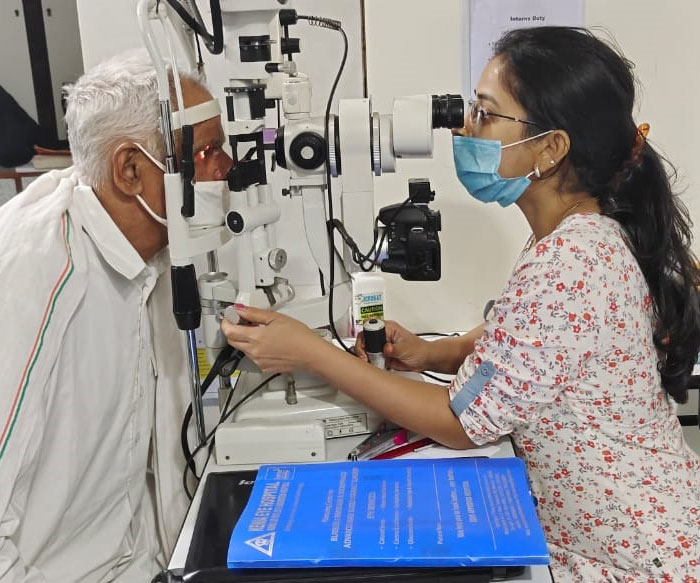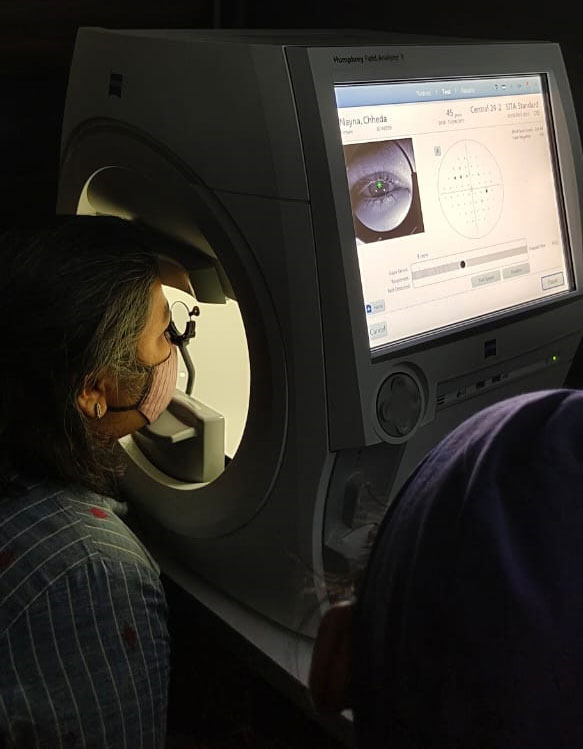Glaucoma Tests
A bunch of nerve fibers together form the optic nerve and acts as the communication cable between your eyes and your brain. When the health of the optic nerve is affected to the point that it gets damaged, then this eye condition is 'Glaucoma.'
It is important to get your eyes checked on a regular basis to make sure you are not at risk for glaucoma or any other eye disease. Understand the symptoms of glaucoma here.
For safe and accurate results for identifying glaucoma and its diagnosis, there are certain tests to help the doctors examine your eyes. Each test focuses on a specific part of the eye.
Some common glaucoma check-ups include routine eye tests. Let's study them in detail to understand glaucoma better.

Tonometry
Tonometry is a procedure that determines the intraocular pressure of the eye. During this test, the eye is desensitized using eye drops. Later, a device called a tonometer measures the pressure within the eye, and then, a small amount of pressure is applied to the eye.
The pressure applied can vary from person to person. The normal eye pressure range for an average person is 12-22 mm Hg.
Ophthalmoscopy
This procedure helps the doctor to examine the optic nerve of the eye. This mainly determines the damage caused. Here as well, eye drops are used by the doctor to make it easy for them to understand not only the shape but also the color of the optic nerve.
To magnify the optic nerve and see it clearly, a doctor uses a small device that has a light on the end. If it is clear that your optic nerve looks odd or slightly different from the doctor, you are asked to undergo few more tests such as Perimetry, Gonioscopy, and pachymetry.
Perimetry
A visual field test that measures all the areas of the eyesight creating a map of your eye is a 'perimetry' test. This test is performed at the initial stage when glaucoma is suspected. The early changes caused by the nerve damage from glaucoma are detected in this test.
The doctor may ask you to take this test multiple times to confirm your results since the visual fields can have variable results over time.

Gonioscopy
To inspect the drainage angle of your eye, a test called gonioscopy is operated.
After the eyes are numbed, the contact lens is gently placed on the eye to view the angle between the iris and cornea. It determines if the angle between the iris and the cornea is blocked or wide open.
Pachymetry
This procedure is quite simple and painless and measures the thickness of the cornea. A tool called a pachymeter is placed on the cornea to determine the thickness. Since corneal thickness has the potential to influence eye pressure readings, pachymetry is the best procedure as it helps doctors to get a better understanding of the IOP reading.
Doctors can easily decide on the appropriate treatments after they receive the reading.
If you detect the disease at an early stage, you can prevent the symptoms go worse and further avoid vision loss.
As glaucoma is all about intraocular pressure on the eye, it needs to be treated by lowering the pressure. The prescription depends upon your situation. Generally, the treatments include eye drops, oral medications, or laser treatments.
These options are intended to lower the pressure on the optic nerve of the eye.
It is quite comforting when the treatment is performed in the right way with no stress on your eyes. This brings us to the conclusion, for easy and painless treatment, contact Kenia Eye Hospital.